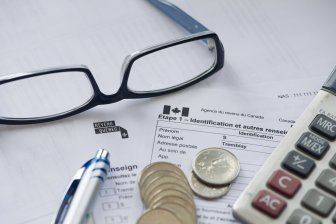TransLink‘s board of directors will debate whether to sign off on a 2.3 per cent fare increase effective July 1 at its board meeting Thursday.

The fare hike is down from the 4.1 per cent increase the agency had originally planned for 2021, amid the effects of the COVID-19 pandemic.
The provincial government granted TransLink $644 million under its Safe Restart Agreement last year, which included a pledge from the agency to hold fare hikes at 2.3 per cent until 2024.
It also scrapped a proposed 4.6 per cent fare increase last summer.
The fare hike would see an adult one-zone fare climb from $3 to $3.05 and a concession fare climb from $1.95 to $2.
An adult one-zone monthly pass would climb from $98 to $100.25, while a concession pass would climb from $56 to $57.30.
The report headed to the board says the added cash flow from the fare hike is needed as it works to maintain service levels as ridership has plateaued to about 40 per cent of pre-COVID levels.

Andy Yan, director of SFU’s City Program, said TransLink needs to balance affordability amid the economic crisis with maintaining a transit system that will attract riders back to its buses and trains.
“Part of this is not necessarily just about price, but ensuring that the public has a confidence about the safety levels of taking public transit as well as service levels,” he said.
“It does, I think, allow them to maintain service levels as well as any kind of new procedures that they have to look at in terms of much more intense cleaning, of different types of technology in terms of really helping the region rebuild in a post-COVID world.”
Transit agencies across the country are facing similar pressures, Yan said.
He said keeping the system moving effectively remains crucial from an economic perspective, with about 60 per cent of the population working in jobs that can’t be performed from home.
Transit planners are also, he said, faced with the challenge of figuring out how people will use transit once COVID-19 is over.
While many people may continue to work from home, Yan said, that could also mean more people giving up their cars and using transit instead for short trips.
“This is the big question that I think a lot of folks in the transit world are kind of scratching their heads now,” Yan said.
“I think moving forward, it also still means that we still need a transit system that is resilient, that is adaptable to these types of needs.”
The proposed fare increase would apply to regular and discounted fares, and is expected to generate about $4 million per year.




Comments